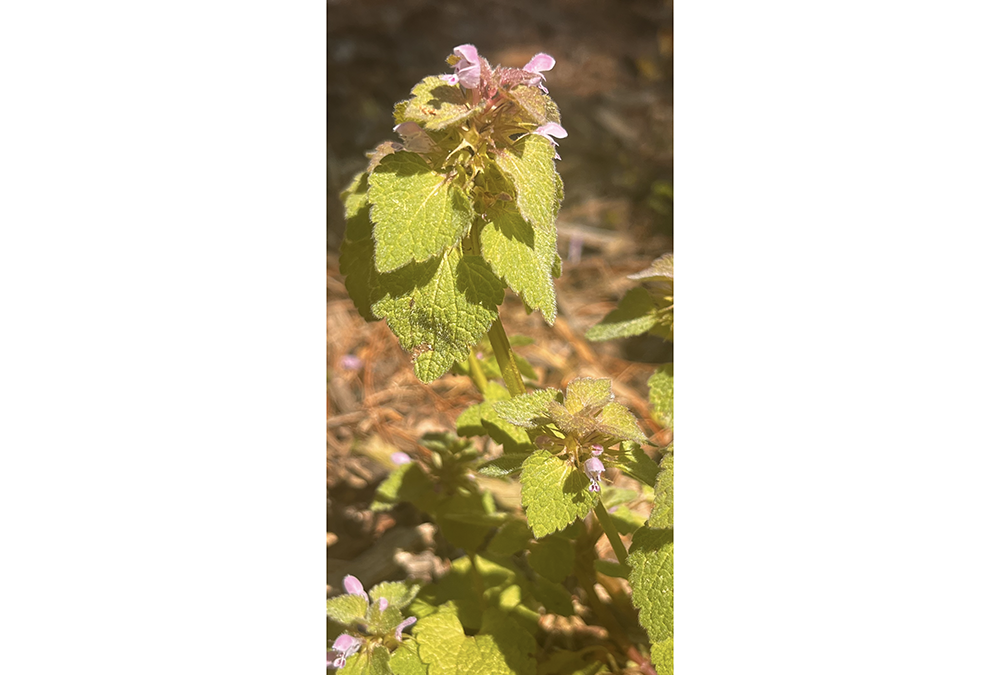lBy Tammy Thornton
If you have been taking care of a yard or garden long enough, you have probably encountered a clump of lamium purpureum. Commonly known as dead nettle, purple dead nettle, or red dead nettle, the morbid names either sound like something that should be avoided or good names for a heavy metal rock band. However, the “dead” moniker refers to the fact that the plant is harmless compared to stinging nettle, which is covered in stinging hairs. True nettles are in a different family than lamium and can give you a stinging, burning rash. You will not forget your encounter with them!
Dead nettle or lamium, however, is harmless, because though it resembles nettle, it lacks the stinging hairs and is not a true nettle. While many people consider purple dead nettle a nuisance weed that must be pulled or eradicated, others see them as edible plants with medicinal properties. Purple dead nettles are a type of lamium in the mint family, which can give you some insight into the spreading nature of these plants. If you are a gardener who is pulling out your hair over pulling up purple dead nettle, you may want to look at them in a different light. Though they do spread easily, they have a shallow root system, so are easy to dig up and remove if they have grown into an undesirable space. However, purple dead nettle can be a great source of pollen for early pollinators, since they form flowers in early spring when other sources of pollen and nectar are not available. Their tubular pink or purple flowers provide the perfect early food source for long-tongued bees and hummingbirds. In late spring and early summer, as the weather grows hot, purple dead nettle will set seed and die, completing its life cycle.
Herbalists sing the praises of this pretty spring-bloomer as a natural remedy for inflammation and digestive issues. Purple dead nettle can be used to make teas and tinctures and can be added to smoothies, soup, stir-fry, or salads. They have an earthy, aromatic taste which some foragers have compared to the flavor of mushrooms, kale, or spinach. Purple dead nettles have nutritional value since they contain Vitamins A and C and are a source of iron, calcium, and fiber.
Purple dead nettle is often mistaken for another type of lamium called henbit. They are often found growing beside each other. As members of the mint family, they both have square stems. While purple dead nettle has fuzzy, heart-shaped leaves, henbit has scalloped, rounded leaves and looks like it is wearing a leaf skirt, ready for a party. Both are cool-season winter annuals that germinate in the fall, bloom in early spring, and die off once they set seed. They both have similar nutritional and medicinal properties, and are both used as a favorite to make a unique pesto.
Isn’t it great to know you can eat your way through the weeds in your garden? Next time your kids ask you what’s for dinner, you can stare them straight in the eyes and tell them, “dead nettle”.
Tammy Thornton lives with her husband, children, and crazy pets while enjoying a life of gardening, cooking, and going to the beach.















